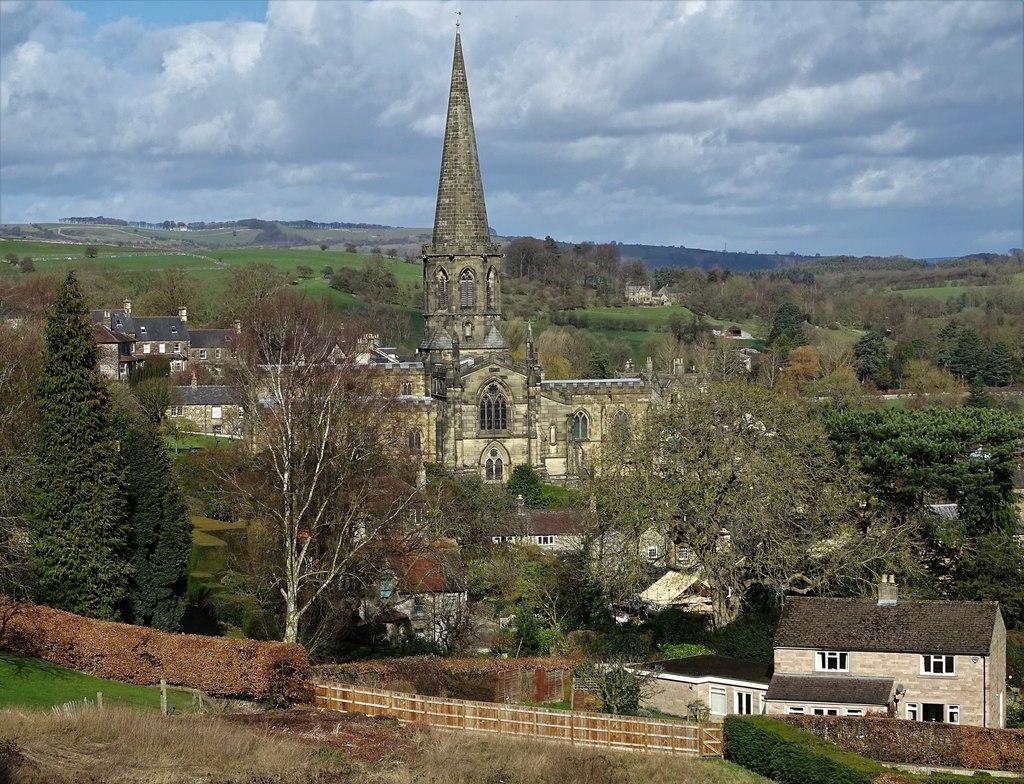St Leonard
Monyash, Derbyshire
St Leonard's church has stood in the centre of the village for almost a thousand years.

The earliest church in Bakewell dates from Anglo Saxon times, but there were probably Christians here long before then, very likely they were among the Roman settlers from the 2nd century onwards.
Bakewell, Derbyshire
Under pressure from invaders, the Christian faith largely died out, but was brought back to the Anglo Saxon kingdom of Mercia in the late 7th century by pioneering missionary bishops who built a number of minster; churches. Bakewell was one of these.
Two Anglo Saxon stone crosses can be found in the churchyard, each bearing intricate carvings. There are also many other carved stone fragments displayed in the porch, and nearby are five ancient stone coffins.
In the 10th century a new church was built, and was still standing at the time of the Norman invasion in 1066. William the Conqueror granted the manor of Bakewell to William Peverel, who may have been one of his many illegitimate sons. In 1110, William Peverel built a new church in Bakewell, and parts of this Norman church are still visible today, especially in the great round arches of the west wall.
About 150 years later, in the mid 13th century, the church building was modernised. The heavy, round Norman arches of the crossing were replaced with lighter, pointed arches, and the north aisle was widened. The south transept was substantially rebuilt to become the 'new work' or 'Newark'. Not long after this, the chancel at the east end of the church was considerably extended, the south porch added and the Newark enlarged eastwards. A tower and spire were built over the crossing.
The Newark contains splendid alabaster tombs dating from the 15th, 16th and 17th centuries, monuments to members of the local Vernon and Manners families. Outside the Newark is another 14th century alabaster monument, in memory of Sir Godfrey Foljambe and his wife.
It became clear that the tower and spire were too heavy for the stonework and during the 18th century the arches of the crossing began to buckle and the spire began to crack. It was removed in 1825. Beginning in 1839, the transepts and crossing were levelled and rebuilt, and a new tower and spire were then added. At the same time, the beautifully carved medieval font was moved. A few years later, the interior of the chancel was remodelled and a new mosaic floor was laid.
More recently, in 1954 the Chapel of St Michael & St George, with its altar by Ninian Comper, was moved to the north transept.
Monyash, Derbyshire
St Leonard's church has stood in the centre of the village for almost a thousand years.
Wardlow, Derbyshire
The Good Shepherd owes its existence to Revd Samuel Andrew, vicar of nearby Tideswell in the late 19th century.
Taddington, Derbyshire
Described as one of the prettiest and best proportioned churches of the Peak, it stands proud in a small hillside village and one of the highest villages in England.